By O’Brien Browne
Like a swarm of ungainly dragonflies, a squadron of six British RE8 observation aircraft droned over the trenches of northern France on the afternoon April 13, 1917. The sky was a bright, cheerful blue and the RE8s were intently engaged in “spotting,” or visually identifying, German positions and signaling coordinates to British artillery on the ground. Suddenly, six German Albatros D.III biplane fighters, one painted completely red and all gaily adorned, roared out of the yellow sun, their twin machine guns spewing a hail of bullets. In a few minutes, all of the RE8s were burning on the ground, their crews lost. The German planes reformed, wagged their wings in victory, and flew on into the dazzling sunlight.
It was just another day for the aces from Jagdstaffel 11, Jasta for short. In the brief but deadly encounter, 2nd Lieutenant Lothar von Richthofen had destroyed two of the British planes, with Lieutenant Kurt Wolff, Sgt. Maj. Sebastian Festner, and their skilled leader, Lieutenant Manfred von Richthofen, shooting down one each; Lieutenant Hans Klein from Jasta 4 bagged another. For the men of Jasta 11, it was a time of grand success and camaraderie. From September to July 1917, the men lived, fought, and died together in the skies over the Western Front, creating one of history’s most illustrious squadrons. For a brief moment, the four men of Jasta 11 were Germany’s aces of aces. Their leader, known to future generations as “the Red Baron,” would become the 20th century’s first media superstar.
An Unhappy Transfer
In the winter of 1917, however, the future of Jasta 11 was not so promising. Since the unit’s inception, it had not scored a single victory over the enemy. The 25-year-old Richthofen, Germany’s most successful living ace with 16 kills, was unhappy to learn that he had been appointed Jasta 11’s new commander. Even worse, he was being transferred out of the renowned Jasta Boelcke, named after its fallen leader, Captain Oswald Boelcke, whose 40 victories were unmatched by any other airman. Under Boelcke’s expert tutelage, Richthofen had become a talented combat pilot himself. Richthofen revered his mentor and dreaded leaving his old unit. His spirits were lifted somewhat when he was awarded the Pour le mérite, popularly known as the “Blue Max,” Germany’s highest and most prestigious decoration, on January 12.
The weather was suitably bleak and cold when Richthofen took up his new command near the French village of Douai. He was greeted by 12 badly trained and unmotivated pilots smoking and slouching around the muddy airfield, among them three scoreless pilots who had been in Jasta 11 since November 1916. The notably unsuccessful trio included a modest, soft-spoken Bavarian, Sebastian Festner, 22; fun-loving Karl Allmenröder, a pastor’s son and a mere boy of 20 with the unwarrior-like nickname, “Little Karl”; and unlikeliest of all, a frail-looking 22-year-old named Kurt Wolff, called Wölfchen (“Little Wolf”) by the others. Richthofen observed his new command with a cold eye. “Working here,” he wrote home, “brings me very little joy.”
Training Jagdstaffel 11
Being highly competitive and eager to surpass Boelcke’s score, Richthofen determined to turn his men into efficient and deadly fighters. The Jasta 11 pilots quickly learned that their new commander was not a paper-pushing bureaucrat, but a fearless combat leader who led by example. Underscoring that impression, Richthofen scored the unit’s first victory on January 23, shooting down a British FE8; he destroyed a second British plane the next day. Richthofen took Allmenröder, Festner, and Wolff with him on patrol. In the first days, they were little help. Richthofen, said his brother, “came back somewhat annoyed, but did not reproach them; on the contrary, he did not say a word about it. Wolff and Allmenröder told me that influenced them more than the harshest dressing-down.”
Gifted with immense organizational and teaching talents as well as a shimmering charisma, Richthofen schooled his unbloodied “gentlemen,” as he called them, in the aerial combat tactics he had learned from Boelcke. Stressing comradeship and discipline, Richthofen instructed his pilots to carefully select their targets while ceaselessly watching their own backs, then to get above and behind the enemy and attack out of the sun while their opponents were blinded by the glare. He stressed the need for the pilots to keep together and cover one another and forbade any “stunt” flying—doing loops or other tricks—as superfluous and dangerous in combat. He also advised them to never fly too low or too far over enemy lines because ground fire often proved fatal. So expertly did Richthofen train his men that Jasta 11 did not suffer its first combat casualty until the end of March.
The Plane Behind the Ace: the Albatros D.III
Although Richthofen believed that the man was more important than the machine, he and his pilots were fortunate that German industry produced an excellent fighter plane, the Albatros D.III, equipped with two Spandau machine guns firing through the propeller. Powered by the ever-reliable 160hp Mercedes engine, the Albatros was fast, maneuverable, and boasted a good rate of climb. It was far superior to such lumbering British aircraft as the RE8, BE2, and FE two-seaters, and was more heavily armed than the DH2, Sopwith Pup, and French-built Spad VII and Nieuport 17 single-seat fighters. The Albatros did, however, suffer from one major weakness—a deadly propensity to shed its lower wings during a steep dive.
While Jasta 11 honed its skills, Richthofen continued to lead by example, shooting down a variety of enemy aircraft ranging from observation craft to fighters. By the end of March he had increased his score to 31 as he inexorably closed in on Boelcke’s magical 40. Around this time, Richthofen had his Albatros painted red. Although he coyly claimed in his memoirs that the garish hue was the color of his old cavalry unit, it also appealed to his innate sense of drama and individualism. On a more mundane level, the color helped his novice pilots locate their leader in the sky and enabled ground dwellers to identify his aircraft, thus adding solid confirmation to any victory claim. Richthofen hoped that the blood-red plane would strike terror in the hearts of its opponents. With this in mind, he encouraged his pilots to apply personal markings to their own “birds,” as they called their aircraft, an idea that greatly boosted unit pride. Eventually, they all adopted various colorations of red, but with personal touches. Allmenröder’s Albatros, for example, sported a white nose and rear stabilizer, Wolff’s a red fuselage and green nose. In the public’s mind, the chivalric colors harkened back to the romantic days of medieval warfare.
Early Successes
Soon, Richthofen’s patience and superb leadership skills began to pay off. The quiet Festner was the first of his pupils to score a kill, shooting down a BE2c two-seater on February 5. Eleven days later, Allmenröder matched him by bringing down a BE2c; Festner destroyed an FE8 on the same day. Richthofen’s men had tasted blood and yearned for more.
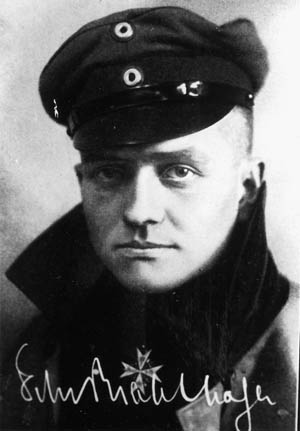
Meanwhile, 25-year-old Karl Emil Schäfer, flying with another unit and with one victory under his belt, was burning to fly in a fighter squadron. Aware of Richthofen’s success, Schäfer sent him a telegram: “Are you able to use me?” This was exactly the type of aggressive airman that Richthofen appreciated. “Come at once!” he replied, and Schäfer joined Jasta 11 on February 21. Energized by Richthofen’s electric personality, Schäfer destroyed a two-seat Sopwith Strutter on March 4. Not to be outdone by his squadron mates, the “delicate little flower” Kurt Wolff revealed his fierce nature by blasting a BE2d out of the sky two days later. Jasta 11 was becoming an efficient killing machine. “My squadron is getting good,” a proud Richthofen wrote home. “I am very happy with it.” At the end of March, 23-year-old 2nd Lieutenant Lothar von Richthofen joined Jasta 11, thanks to his older brother’s influence. Now the band of brothers was complete. The days of glory could begin.
March was a successful month for Jasta 11. Richthofen was promoted to Oberleutnant after he knocked down 10 enemy aircraft. His men eagerly attempted to emulate their leader, with Allmenröder shooting down three enemy machines, Wolff five, and Schäfer seven. Even Richthofen’s neophyte brother scored, bringing down a FE2b on the afternoon of March 28.
The twisting, confused nature of dogfighting was captured in a letter by Schäfer, describing his third kill on March 4. “My first opponent eluded me in a steep dive,” he wrote. “Before I could follow him I saw Allmenröder being pressed hard by two Englishmen and I gave him some breathing room. As I did, a Vickers single-seater got in behind me. I made a half-loop and went into a spin; two comrades who saw it thought I had been shot down, as did the Vickers pilot, who then left me alone. I squeezed out of the scrap in such a way that I had a measured look at things and then very calmly went after a Sopwith two-seater. After I fired 100 shots it began to burn, then side-slipped down, fell end over end and fluttered earthwards in a burning heap, whereupon I could not help letting out a loud Hurrah.”
A Band of Brothers
More than just a military unit, the six men were friends. “Richthofen and I,” Allmenröder, boasted in a letter to his sister, “always fly together, each looking after the other.” Wolff in particular ingratiated himself with the others because of his gentleness and playful sense of humor. He was close to both Richthofens, and visited the Richthofen family estate in Schweidnitz. Richthofen’s mother liked Wolff’s “dear, amusing boy’s face.” A great source of amusement was the long nightcap “Little Wolff” always wore under his flying helmet as a lucky charm. With his jokes, he was the darling of Jasta 11.
The victories of March were a mere foretaste of the glories to come. April was a splendid month for the squadron. The skies were blue, the weather mild. The British Army was planning a major attack around Arras in Jasta 11’s sector, and the air was rife with RFC observation and fighter craft on vital photographic, reconnaissance, and combat missions. The British deployed 365 aircraft on the Arras front against only 195 German machines. Despite these odds, Jasta 11 was determined to deny the enemy aerial superiority.
Fired by their first successes and egged on by the infectious ambition of their commander, Richthofen’s band of brothers threw themselves into the battle, flying an exhausting four or five patrols a day, usually together. By the end of April, Wolff had destroyed an impressive 23 enemy craft. Lothar von Richthofen and Schäfer both boasted 15 kills, Allmenröder nine, and Festner 12, including a notable victory over a BF2a, one of whose occupants was Captain William Leefe Robinson, winner of the Victoria Cross, Britain’s highest award for bravery. While patrolling with Wolff on April 11, Manfred von Richthofen shot down a low-flying BE2d for his 40th kill, at last matching his mentor Boelcke’s score. But Richthofen was not satisfied to stop there. His tally reached 52 when, in a breathtaking performance, he shot down two fighters and two observation craft on the 29th. Called “Bloody April” by their British foes, the month saw Jasta 11 score a stunning 89 confirmed victories, making it the German Air Force’s most successful squadron.
Richthofen was the undisputed ace of aces. His and Jasta 11’s achievements were widely reported in the press, feeding the German people’s hunger for flair and excitement in an increasingly bloody and protracted war. Richthofen, his brother Lothar, Festner, Allmenröder, Schäfer, and Wolff became household names, their pictures immortalized on a popular series of postcards produced by the Sanke Company and avidly collected by enthusiasts much as Americans collected baseball cards.
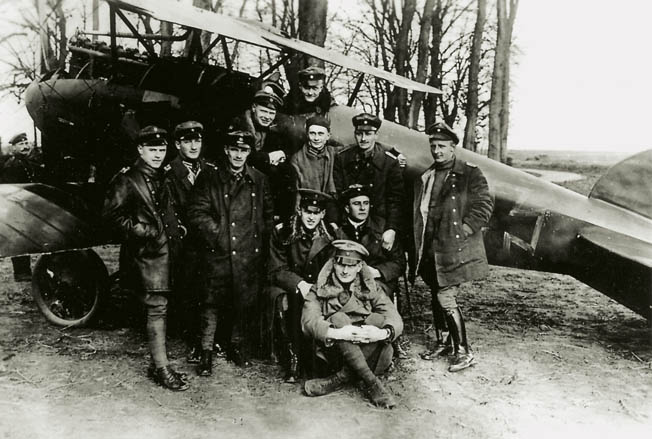
“The Red Devil”: Richtofen’s Accelerating Fame
Richthofen was quickly promoted to the prestigious rank of Rittmeister (cavalry captain) on April 6, and his handsome face, his service cap tilted at a rakish angle, his coat collar turned up and the Pour le mérite gleaming at his neck, appeared everywhere. “He is in all the papers,” his proud mother wrote in her dairy, “on the lips of all the people; the flag waves over his name.” He received hundreds of fan letters at squadron headquarters, and was besieged by countless autograph hunters and reporters. Women especially adored him and wrote to him by the hundreds. Showered with virtually every medal his country could bestow upon him, Richthofen was dining with top-ranked generals and even the kaiser himself, mobbed by adoring crowds wherever he went.
Richthofen was equally famous across the lines, where he was called “the Red Devil,” “le petit rouge,” and other more colorful, unprintable expressions. Only later would he become legendary as the “Red Baron.” All of Jasta 11’s fighters, carrying the unit marking of red, were well known. A visiting reporter thought the unit’s aircraft looked like a “swarm of radiant butterflies.” Because of the squadron’s ability to pack up their tents and move up and down the line according to necessity, Allied pilots began referring to them as “the Flying Circus,” or “Richthofen’s Circus.”
The Cost of Combat
But fame was no protection against the vagaries of aerial combat. One of the peculiarities of this form of combat was that anybody, regardless of skill and experience, could be brought down by anybody else at any given moment. Schäfer, for instance, crash landed on April 4, was shot down on the 13th, and was brought down again on the 22nd, struck by ground fire and narrowly escaping capture by British troops as he worked his way across no-man’s-land. During a dogfight with the British 60th Squadron on April 8, the lower port wing on Festner’s Albatros broke apart, and he was forced to land. Richthofen himself survived two potentially fatal incidents, one when his fuel tank was struck by enemy fire and he had to land. On the other occasion, when he broke his own rule by flying too low, his airplane was severely hit when the Sopwith Strutter he had just forced down unchivalrously kept firing at him from the ground. “I once more attacked him,” Richthofen wrote, “and killed one of the occupants.”
Under the intense strain of ceaseless combat, Richthofen’s young team was forced to deal with the pressures of history’s first air war—the adrenaline rush of fear, the daily brushes with death, the thrill of the chase and the kill, the nerve-killing dullness of fatigue—years before notions of combat stress had been identified. Treatment for shattered nerves did not exist and pilots simply flew and fought until they collapsed or were wounded or killed. And everybody was trying to kill them: small arms and machine guns from the trenches, antiaircraft guns, enemy fliers, structural and engine troubles on their aircraft, mid-air collisions during dogfights, and friendly fire. On top of this, they had to cope with killing young men like themselves. When Schäfer destroyed a British FE2d on April 3, he sardonically referred to it as “infanticide,” alluding to the youth of his victims. Richthofen smoked constantly and suffered from nightmares about seeing his first English victim die in the air.
Early in the morning of April 25, Sebastian Festner attacked several Sopwith Strutters from the 43rd Squadron. Depending on the source, he was either shot down by one of these, suffered wing failure, was hit by ground fire, or was the victim of a broken propeller. Whatever the fate that pressed him earthward, he smashed into the ground and died. As the first of the band to fall in combat, Festner’s death shocked and saddened his comrades. Jasta 11 suffered its second blow when Schäfer, a seasoned ace with 23 victories, was awarded the Pour le mérite and appointed commander of Jagdstaffel 28, on April 26. In a letter to his parents, Schäfer wrote that he was “bitterly sad that I must leave the Staffel I have come to love, the splendid circle of comrades and most of all, Richthofen. If I had a choice, I would prefer a thousand times more to remain here.”
The Red Combat Pilot: Richthofen on the Homefront
On May 1, Richthofen was ordered to take an open-ended leave, the kaiser wishing to preserve his valuable national hero. Richthofen appointed his brother acting commander of Jasta 11. Back in the Fatherland, Richthofen sat for portraits, dined with royalty, and dictated his memoirs, The Red Combat Pilot, which became an instant bestseller. It was translated into English and widely read in Great Britain and elsewhere. Surrounded by ecstatic fans wherever he went, Richthofen sorely missed his squadron mates and longed to return to them.
In the newspapers, Richthofen proudly followed the victories of his friends. “Little Wolff” raised his score to 29 and was awarded the coveted Pour le mérite on May 4. Three days later, Lothar was involved in an evening dogfight with brand-new double-gunned SE5 fighters from the crack 56th Squadron. During the clash he shot down Captain Albert Ball, Great Britain’s highest ace and holder of the Victoria Cross. This impressive feat, Lothar’s 20th kill, made headlines across Germany. Delighted with his brother’s achievements, Richthofen was jolted by a telegram: “Lothar is wounded, but not mortally.” Flying with Allmenröder on the 13th, Lothar had been struck in the hip by ground fire and hospitalized. Richthofen visited his recuperating brother, writing to their mother that “he looked splendid, tanned with the Pour le mérite around his neck.” But in a subsequent letter home, Richtofen cautioned: “Under no circumstances should [Lothar] be allowed back at the Front until he is physically fit. Otherwise he will suffer a relapse or be shot down.”
Boyish Allmenröder, the last of the old band still remaining in Jasta 11, was appointed its commander. “The entire responsibility has been given to me by Richthofen,” he excitedly wrote his sister. “Hopefully, I will remain in his Staffel a long time!” Allmenröder gamely carried on the old traditions by downing 13 enemy aircraft in May; he received the Pour le mérite in June. Richthofen was also gladdened to hear that Schäfer had shot down his 30th victory, a DH4 bomber. The next day, however, the Rittmeister received the stunning news that that his friend was dead. Schäfer had fallen on June 5 during a dogfight with FE2ds. Years later, Lieutenant H.L. Satchell recalled bringing down the German ace. “Schäfer looped over the top of us and we stalled, and fell down on him as he was coming out of the loop,” wrote Satchell. “Both I and my observer, Lt. T.A. Medford-Lewis, had our guns going. We were about 50 yards from him and I can still picture his black helmet and red plane. He made a serious mistake and it cost him his life.” Schäfer had violated his master’s warnings against doing tricks in the air. A saddened Richthofen canceled all appointments in his busy schedule to attend his friend’s funeral in Krefeld, Schäfer’s hometown.
Returning to the War
When Richthofen returned to active duty in early June, he quickly realized that the air war had changed. His happy band of fighters was broken. Adding to the Rittmeister’s concerns were the excellent new Allied aircraft now confronting German pilots—the robust SE5a fighter, the superb Bristol two-seat fighter, and the highly maneuverable Sopwith triplane and Camel fighters, the latter armed with twin Vickers machine guns. Tactically, the Allies were appearing over the front in massed formations of more than 50 aircraft. To counter this, German fighter units were equipped with new Albatros D.V and D.Va fighters, which were supposed to be an improvement over the D.III but still suffered from weak lower wings. They were outclassed by the latest Allied planes.
On June 25, Richthofen shot down his 56th opponent, a RE8, and was officially informed that he was commander of Jagdgeschwader I (JGI), a combat group comprising Jastas 4, 6, 10, and 11 and capable of putting 50 to 60 fighters in the air at one time. This reorganization placed enormous leadership and administrative strains on Richthofen and signaled how the massed nature of the ground war was reflected in the air war.
Like his boss, young Allmenröder continued to score as well, shooting down his 30th opponent, a Nieuport fighter, on June 26. Now he was second only to Richthofen in kills. Eager for more victories, Allmenröder was out again the next morning, flying low over the lines—the near-fatal mistake that Richthofen had made weeks earlier. Suddenly, according to a letter Richthofen wrote to Allmenröder’s father, he was fired upon by “an English plane that was at least 800 meters away [a] tremendous distance.” Other reports indicated that small-arms and antiaircraft fire was heard coming from the trenches. “Karl’s machine,” Richthofen’s letter continued, “immediately made a left turn in the direction of our lines: a sign that there was still a conscious presence in the machine. His comrades noticed that he turned off the gas, and passed over in a glide. From this glide, a vertical dive resulted, which did not cease.” The mortally wounded ace’s airplane fell into no-man’s-land; his body was recovered by German soldiers that evening. “I could not wish,” Richthofen concluded, “a finer death for myself than to fall in aerial combat; it is a consolation to know that Karl noticed nothing of his end.” Allmenröder was 21 years old.
A Blow to the Head
Richthofen and Wolff were now the last of the original band of brothers. On July 2, Richthofen had Wolff transferred back to Jasta 11 as its commander. This same day, the Rittmeister avenged Allmenröder’s death by bringing down an RE8 for his 57th victory. He was out hunting again with Wolff and others on the morning of July 6. Carefully, Richthofen and his men stalked nine FE2ds patrolling over the German lines. The Rittmeister signaled the attack. As he roared downward, he saw Wolff already blazing away at the enemy. Calmly, with a hunter’s precision, Richthofen selected his prey, letting him grow in his gunsights; the British observer was already nervously firing at him, even though he was out of range. Biding his time, Richthofen had not even released the safety latches on his guns. As his opponent banked to avoid him, Richthofen calmly maneuvered to stay behind. “Suddenly,” he recalled, “I received a blow on my head! I was hit!” A lucky shot had clipped a two-inch patch of skin and bone from his head. “For a moment,” he went on, “my whole body was completely paralyzed. My hands dropped to the side and my legs dangled in the fuselage. The worst part was that the blow on the head affected my optic nerve and I was completely blinded.”
Richthofen’s plane plunged earthward. Through sheer will power, he regained the use of his limbs and frantically grabbed the joy stick. “I must see!” he recalled saying to himself as his eyesight returned, although “it was like looking through thick black glasses.” He made a decent landing in a field, tried to climb out of the cockpit but tumbled out and lay on the ground in a daze. When he came to, he found himself in St. Nicholas Hospital in Courtrai. The ace of aces had proven vulnerable at last.
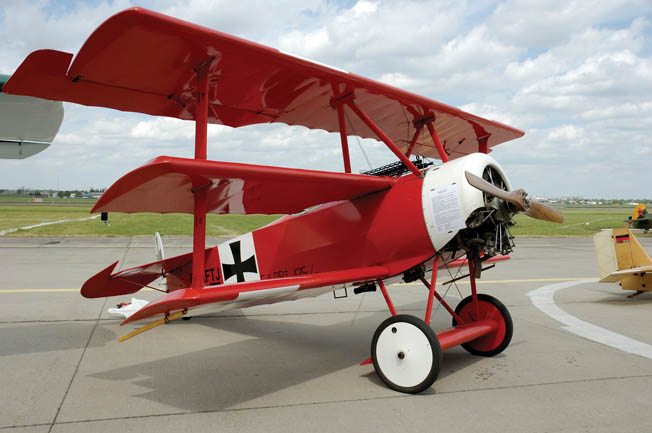
“Nothing Left of the Lively Merry War”
Wolff was now the last of the band still flying. He was on a morning patrol again the day after Richthofen was wounded, shooting down a Sopwith triplane for his 33rd victory. Four days later, flying to the east of Ypres, Wolff was leading Jasta 11 over the lines when tracers ripped past the German fighters and a squadron of 12 triplanes from the 10th Naval Squadron roared down on them. In a letter to his girlfriend, Wolff humorously described what happened next. “I had my hand right where an Englishman was shooting,” he wrote. “The bullet, being the harder component, went through the hand—the wrist bone was shot clean through.” Wolff dove out of the dogfight and returned to the airfield. Hours later he found himself lying alongside Richthofen in the hospital.
Lothar and Wolff were still recovering in hospital when Manfred returned to command on July 25, his wound unhealed, his head still bandaged, struggling with headaches and depression. Although his unit was doing fine work, the fun was gone, the lines in his face harder. “There is nothing left,” Richthofen jotted down, “of the lively, merry war as our deeds were called in the beginning.” Richthofen was soon leading patrols, although it was not until August 16 that he scored again, shooting down a Nieuport 17. Somehow, it was different now. “I am in wretched spirits after every aerial battle,” he wrote. “But that no doubt is an after-effect of my head wound.” The Rittmeister would often head straight for his quarters after returning from patrol, explaining that he did not want to see anyone or hear anything.
Wolff understood these feelings. Promoted to Oberleutnant, he returned to the war on September 11, forever changed by his grim experiences. Unable to shoot down the enemy as he had done during the heady days of the spring, the frustrated pilot was killed in action flying a new Fokker triplane just four days after rejoining his unit. Lothar received the depressing news while convalescing at home. His mother observed his reaction: “His lips grew hard; he sat the whole day and stared through the window at the dark trees in the garden.”
225 Downed Aircraft
Now all of Richthofen’s friends were dead. As the hero of the German people and commander of JGI, he still had a difficult task awaiting him—to carry on. His sense of duty and his burning ambition brought him back into the air, where he would reach an unheard-of 80 victories en route to becoming the highest scoring ace of World War I. Finally, the Red Baron fell on April 21, 1918, a victim of fatigue, headaches, depression, and violating his own rules against flying too low and too far over enemy lines. It was exactly one year after the glories of April 1917. He had not yet turned 26.
Of the original six who had made up the band of brothers, only Lothar von Richthofen survived the war, saved by his injuries. Wounded twice more, the 40-victory ace was recuperating in the hospital when he learned of his brother’s death. “Had I been there,” he said sadly, “it would not have happened.” Lothar met a flyer’s end when he was killed in a civilian aircraft accident in 1921.
Manfred von Richthofen had molded and managed his men superbly. From a group of badly trained, unmotivated young men, he shaped a band of brothers that became textbook examples of boldness, courage, and skill. Thanks to their leader’s immense talents, four of the band would be awarded the Pour le mérite. In their brief, violent careers, Festner, Schäfer, Allmenröder, Wolff, Lothar, and Manfred accounted for a combined record of 225 downed aircraft. It was an exhilarating time. Flying and fighting for fame and Fatherland, the young German pilots in Jasta 11 were driven by the reckless belief that they were not going to die. They were wrong, but at least they died on their own terms, in the brilliant blue skies above the squalid gray trenches.
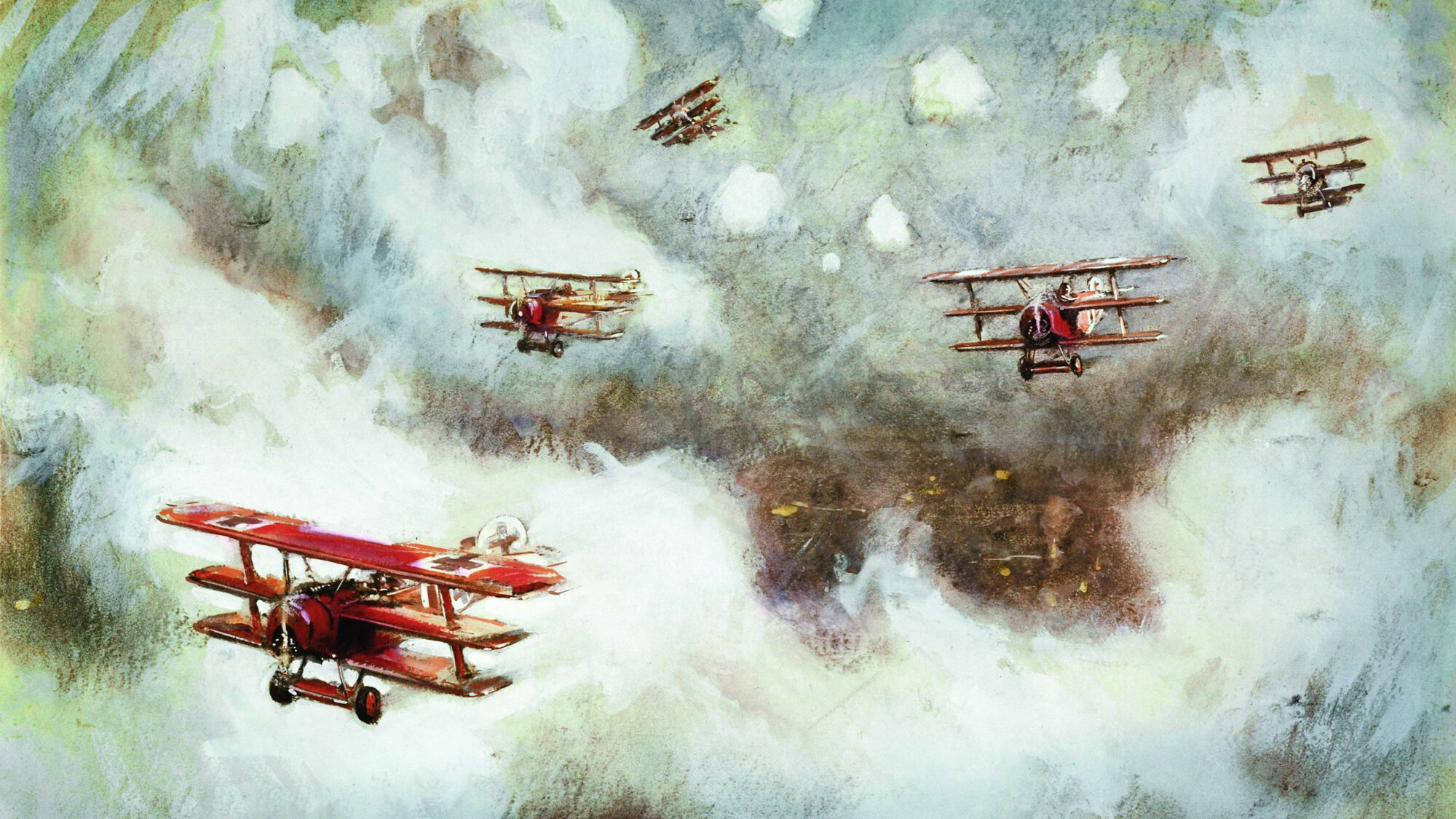
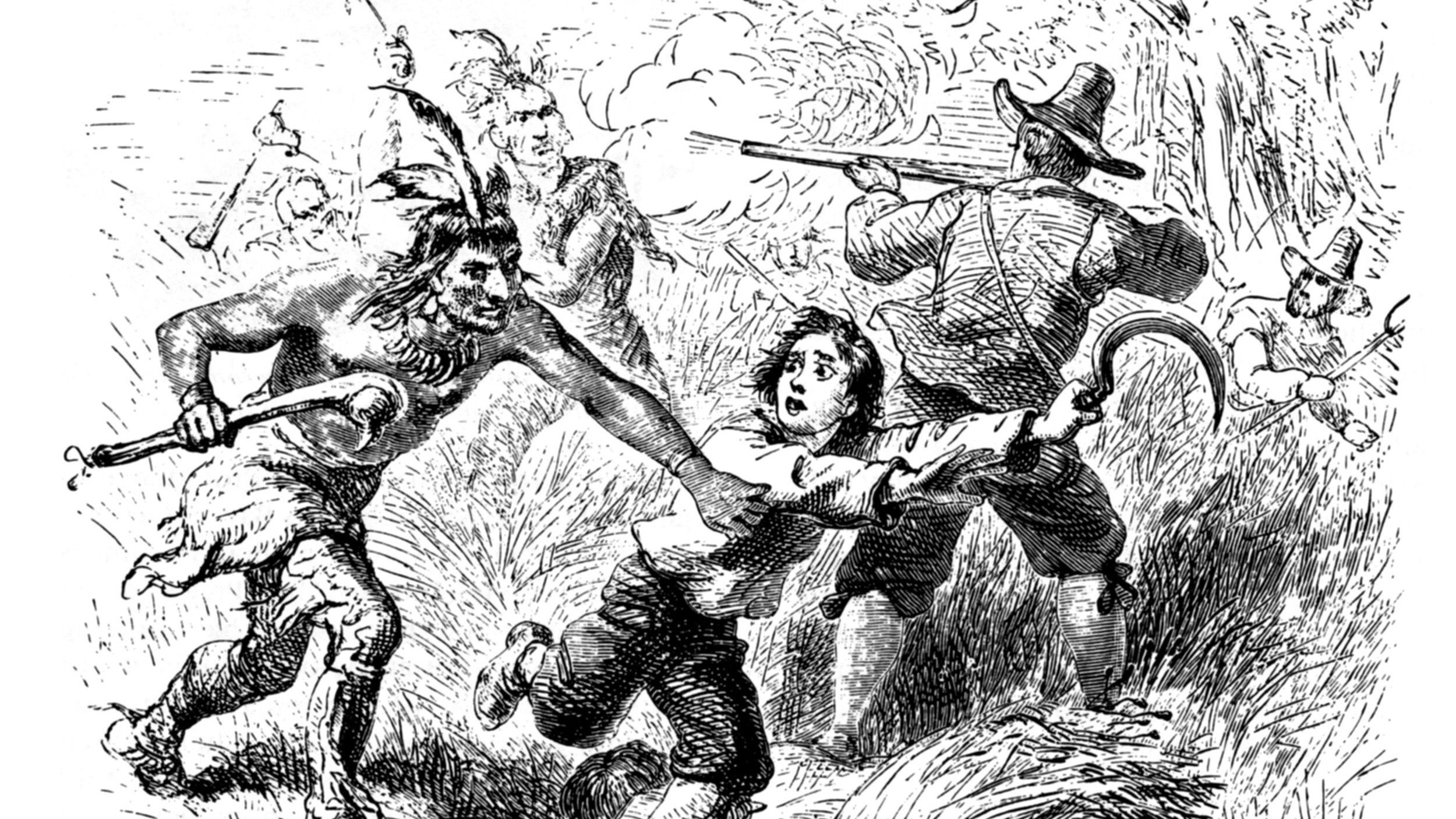
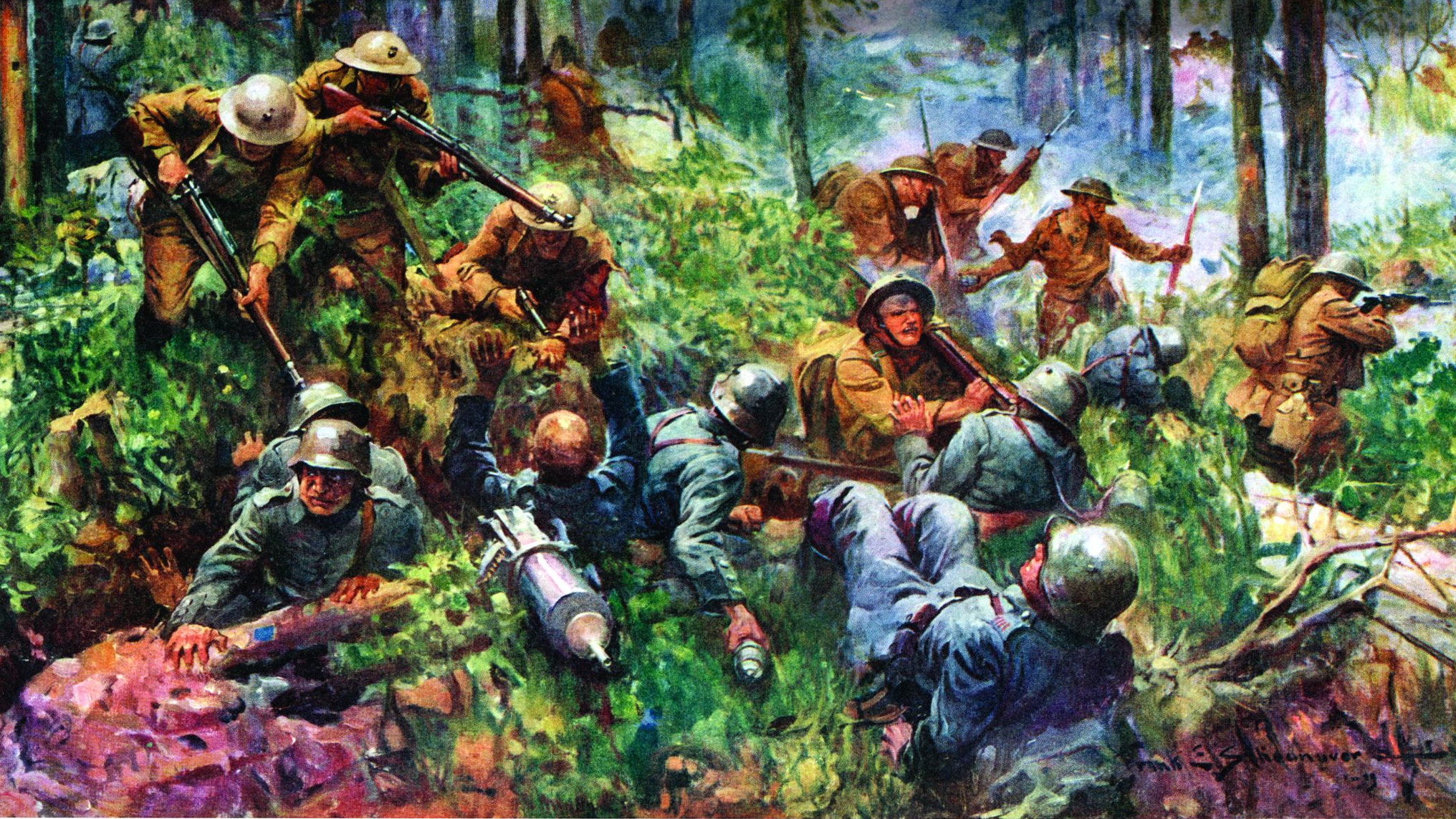
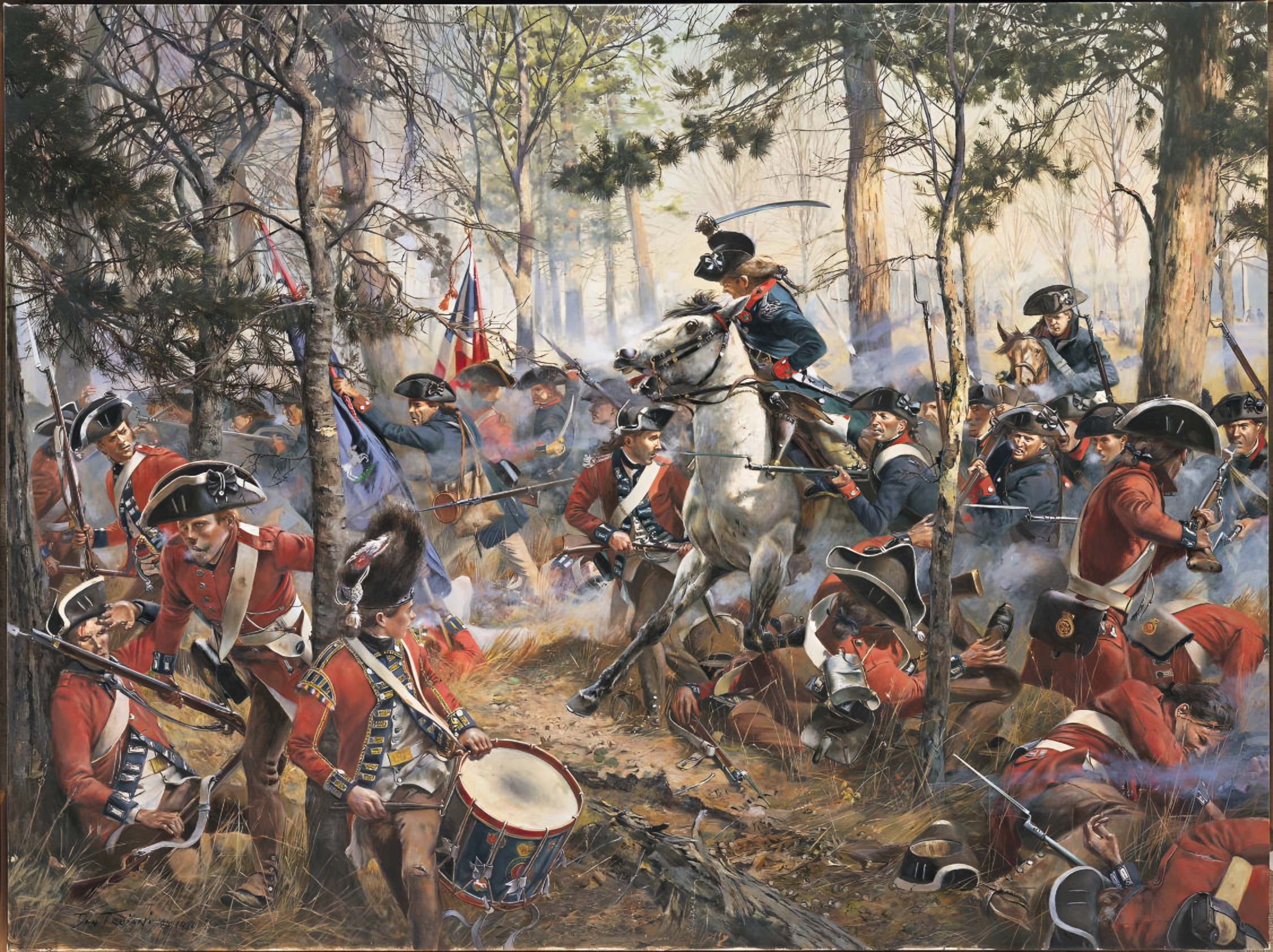
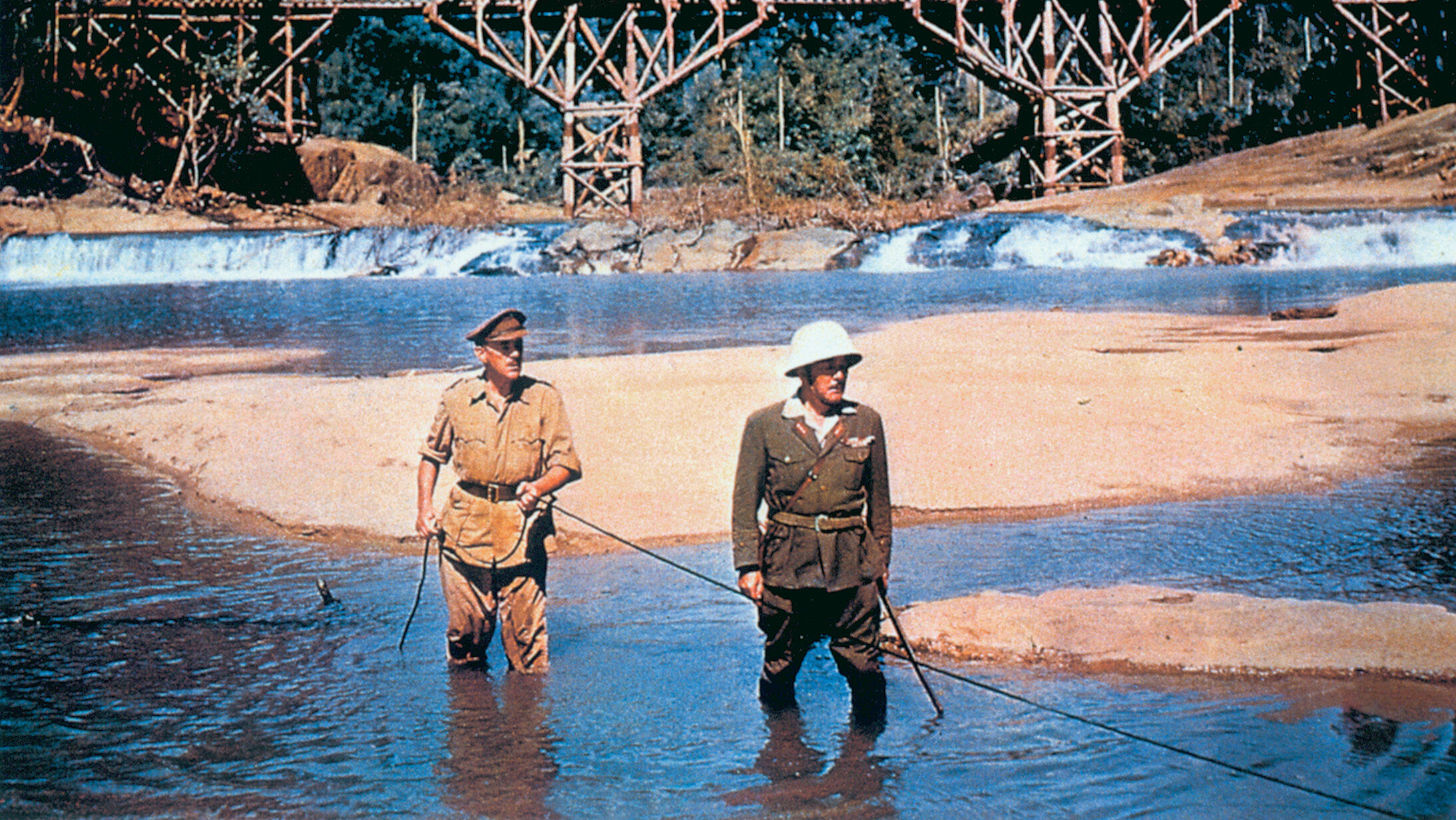
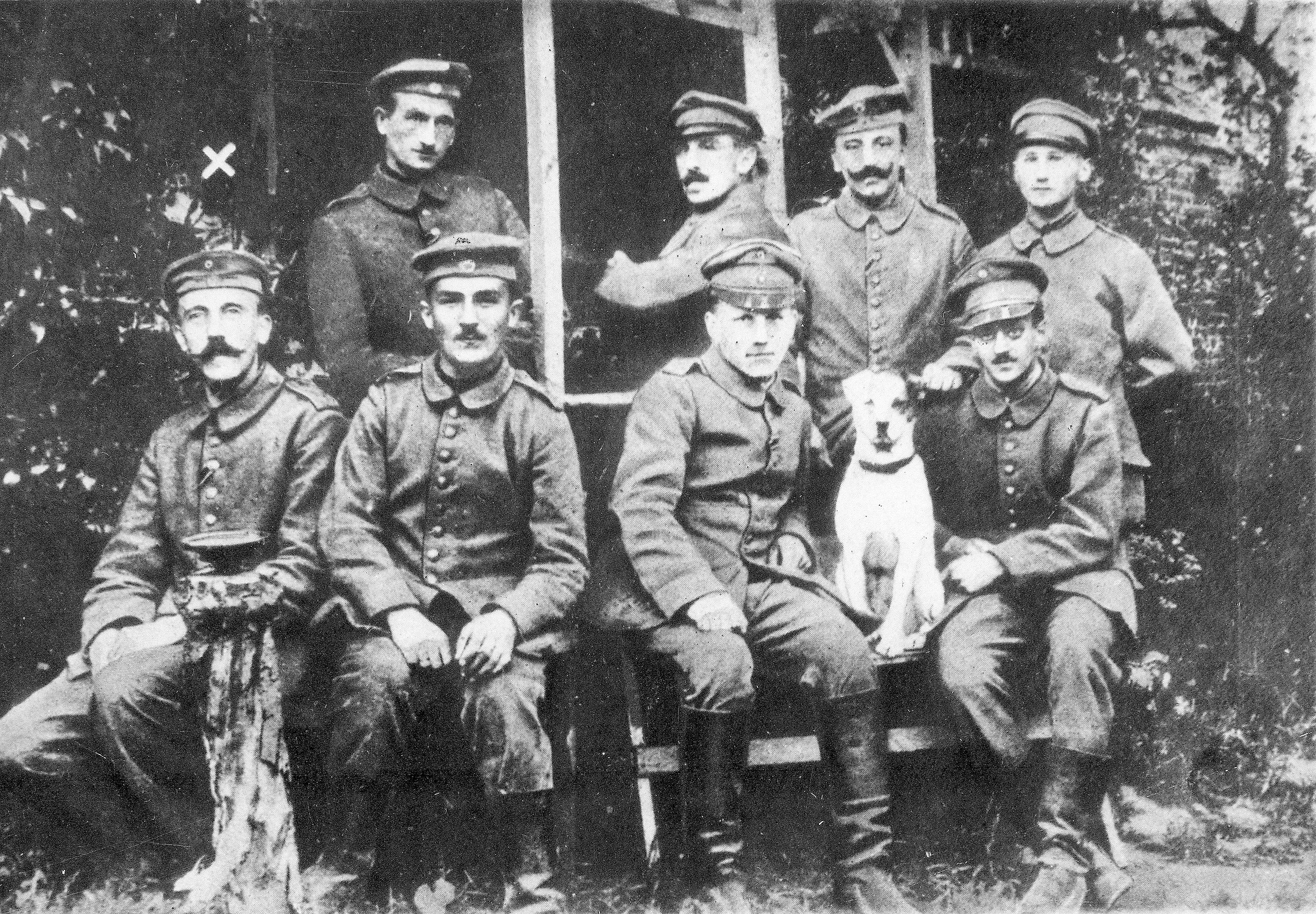


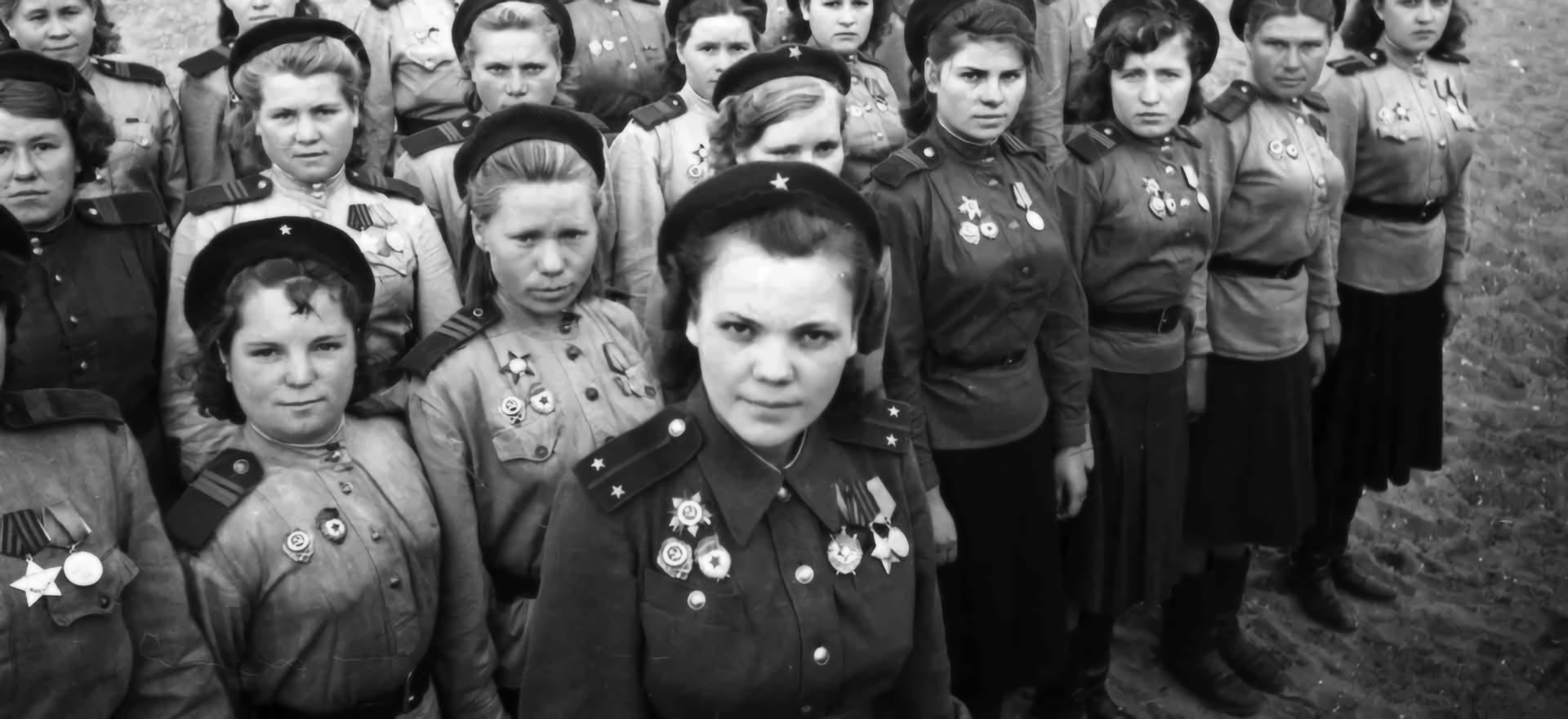
Sounds like a Tal of the Crypte; a period when Chivalry was still a certified fact between air pilots.
Thanks for posting
The heady days of Jasta 11 are always extremely interesting in how the air war was fought and of the personalities that achieved such heights of success. Von Richthofen was a certified leader, trainer, and warrior in an increasingly lethal battlefield and like many of the great aces, fell in combat at a very young age. Great capture of that time of Jasta 11 and the great “Red Baron”.